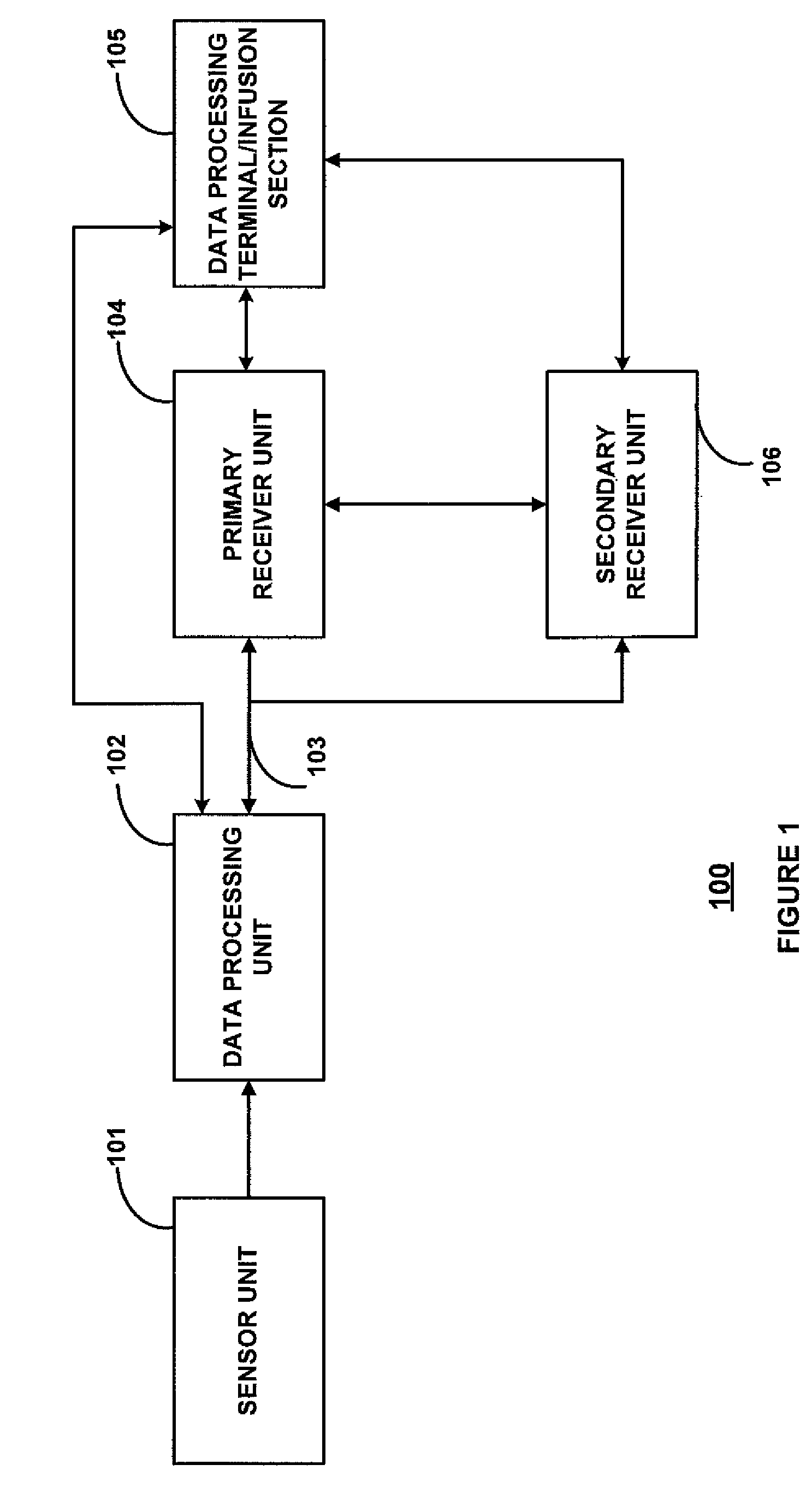Reference electrodes having an extended lifetime for use in long term amperometric sensors
a reference electrode and long-term amperometric technology, which is applied in the field of reference electrodes having an extended lifetime for use in long-term amperometric sensors, can solve the problems of extending the lifetime limiting the life of the sensor as a whole, and limiting the life of the reference electrode, so as to achieve the effect of prolonging the lifetime and ensuring stability
- Summary
- Abstract
- Description
- Claims
- Application Information
AI Technical Summary
Benefits of technology
Problems solved by technology
Method used
Image
Examples
example 1
Reference Electrode Having a Dielectric Cover Layer
[0132]FIG. 6A shows a glucose sensor design with three electrodes that are formed by screen-printing on a polyester substrate. The conductive traces are separated by dielectric layers that are also formed by screen printing. The Ag / AgCl pad has an area of about 0.1 mm2, and a thickness of about 5 μm. The total load of AgCl is about 400 ng. Clinical studies using sensors of this design have shown that the sensor output current becomes noisy 3-4 days after implantation. Subsequent in-vitro studies confirmed this phenomenon. Coulometric experiments showed that, whenever a sensor's output current became noisy, there was almost no AgCl left on its Ag / AgCl reference electrode.
[0133]To improve the sensor performance, a series of sensors were fabricated with the Ag / AgCl pad covered partially by a layer of dielectric. Three sets of sensors with exposed Ag / AgCl areas of approximately 20%, 50%, and 100% (n=4 for each case) of the relatively co...
example 2
Reference Electrode Having a Permselective Layer
[0135]A permselective coating (in addition to the overlying glucose flux-limiting membrane) can extend reference electrode lifetime. Experiments were performed with a localized coating of poly(vinylpyridine-co-styrene) with 10% loading of styrene over the Ag / AgCl reference element of the reference electrode. This material has a much lower permeability than the standard (control) glucose flux-limiting membrane. FIG. 8 shows accelerated aging studies (at 66° C.) of such an electrode, compared to a control (non-protected) reference electrode.
[0136]Note electrode lifetime (the time until onset of noise in the signal) is significantly improved in the protected electrode, from approximately 18 hours to 120 hours, or about a 6 fold increase. Furthermore, this protected electrode is expected to have a substantially longer lifetime at the subcutaneous temperature of about 34° C.
example 3
Renewing Ag / AgCl Reference Electrode In Situ with an Applied Electrical Potential
[0137]The reference electrode of the experimental sensors was formed by screen printing a Ag / AgCl pad with an area of about 0.1 mm2, and a thickness of about 5 μm. The total load of AgCl and Ag are about 400 ng and 1000 ng, respectively. The total electrochemically accessible AgCl and Ag are equivalent to 200 μC and 500 μC, respectively. In order to evaluate the charge injection frequency, the dissolution rate of AgCl was first determined in-vitro in PBS using standard coulometric technique. As seen in FIG. 9, AgCl dissolves at an average rate of about 50 μC per day. The variation in the charge values is due to the variation of the reference electrode pad areas caused by the screen printing resolution limitation.
[0138]With a potential of +200 mV against a commercial standard Ag / AgCl electrode (Bioanalytical Systems, Inc.), AgCl was successfully regenerated repeatedly on the sensor's reference electrode,...
PUM
| Property | Measurement | Unit |
|---|---|---|
| electrical potential | aaaaa | aaaaa |
| electrical potential | aaaaa | aaaaa |
| electrical potential | aaaaa | aaaaa |
Abstract
Description
Claims
Application Information
 Login to View More
Login to View More - R&D
- Intellectual Property
- Life Sciences
- Materials
- Tech Scout
- Unparalleled Data Quality
- Higher Quality Content
- 60% Fewer Hallucinations
Browse by: Latest US Patents, China's latest patents, Technical Efficacy Thesaurus, Application Domain, Technology Topic, Popular Technical Reports.
© 2025 PatSnap. All rights reserved.Legal|Privacy policy|Modern Slavery Act Transparency Statement|Sitemap|About US| Contact US: help@patsnap.com



